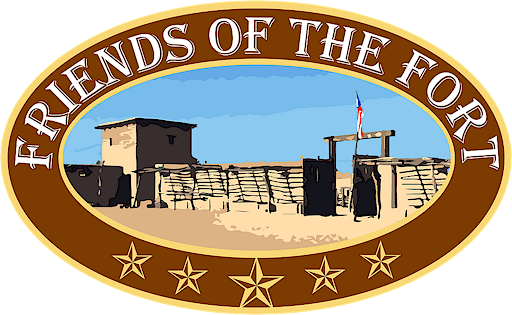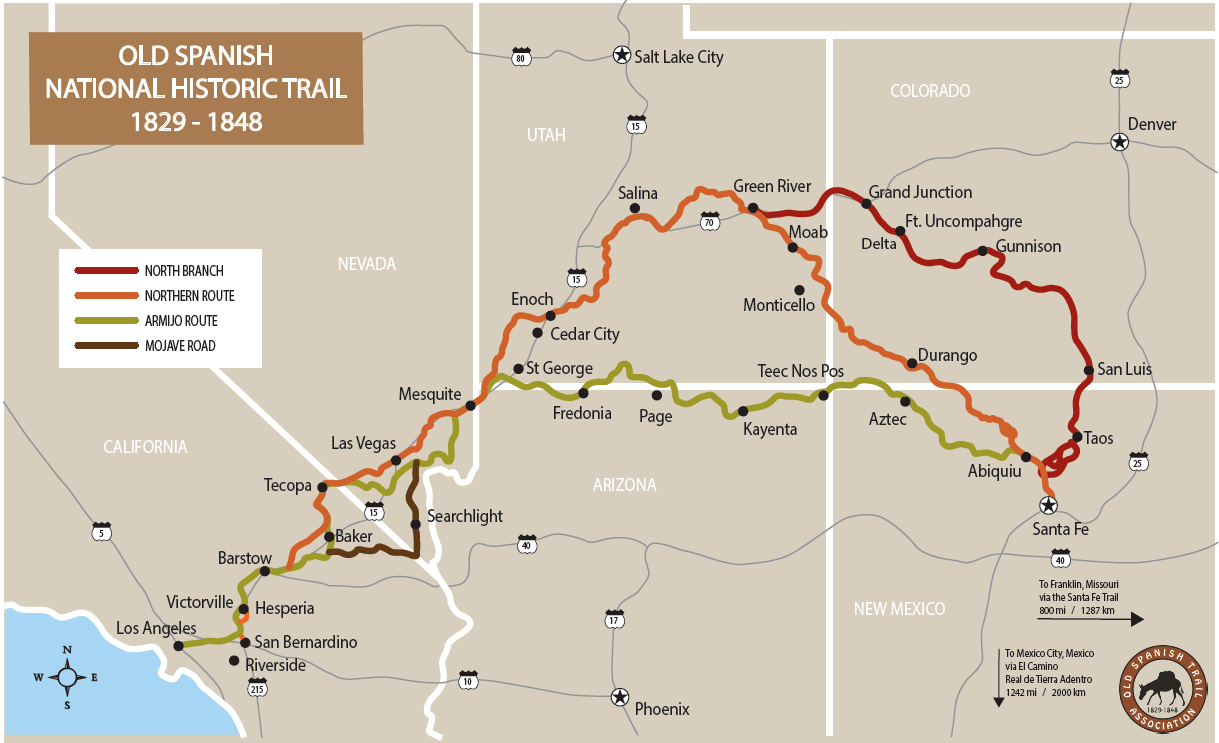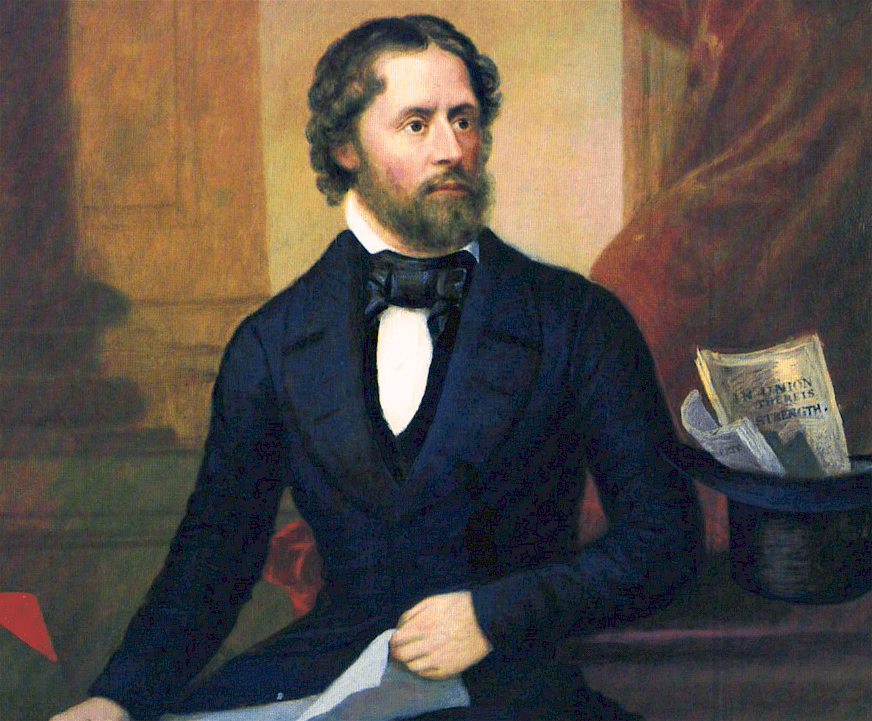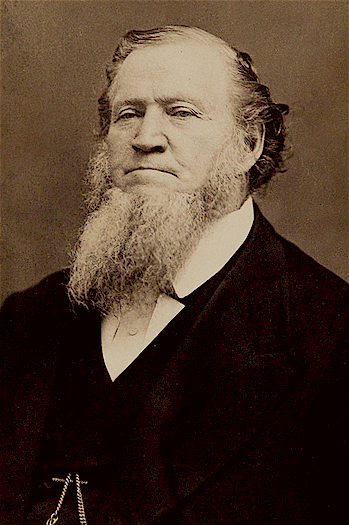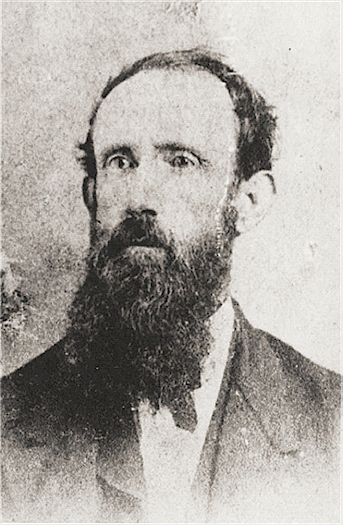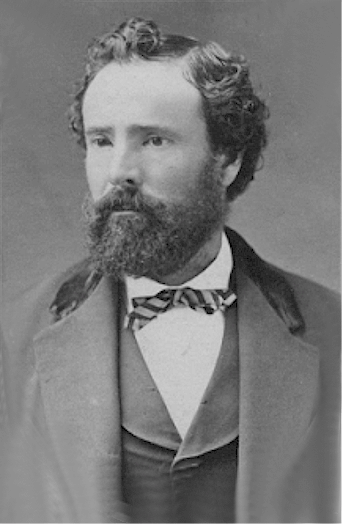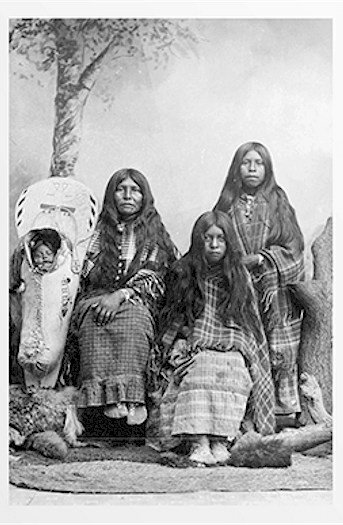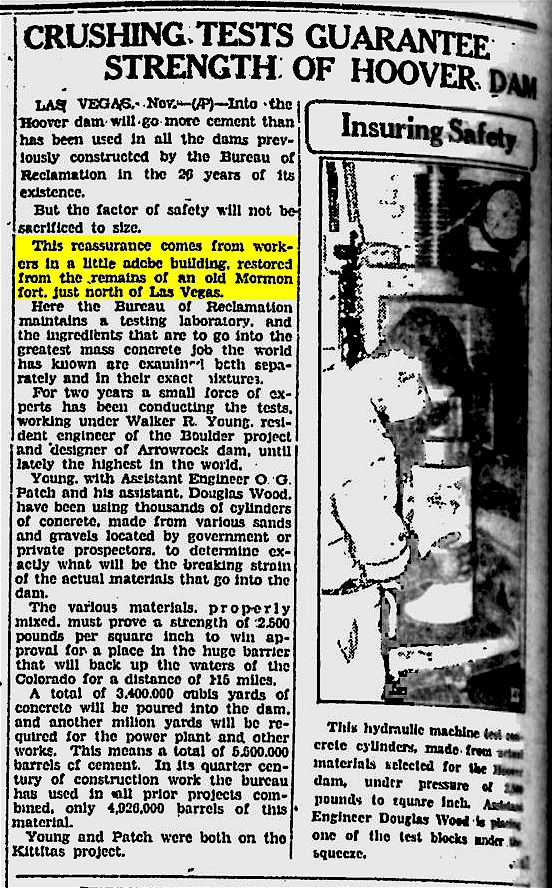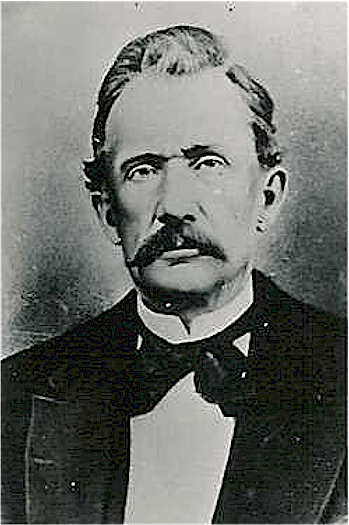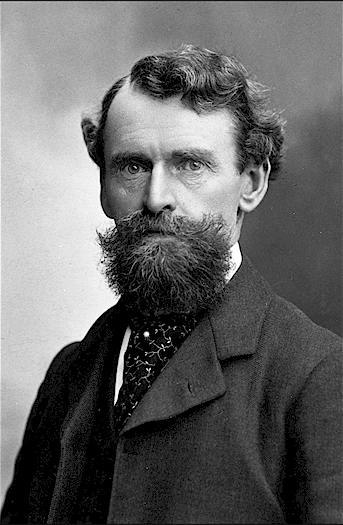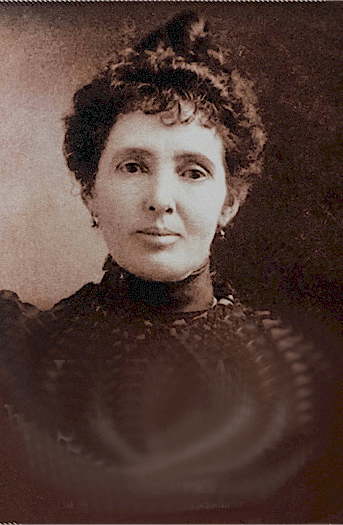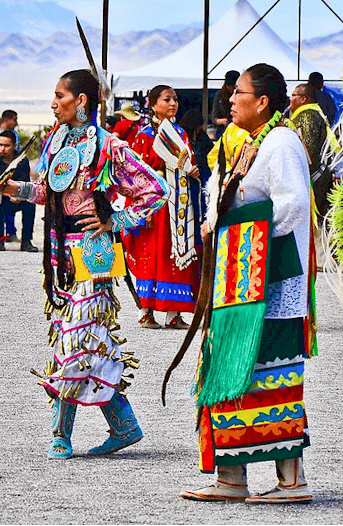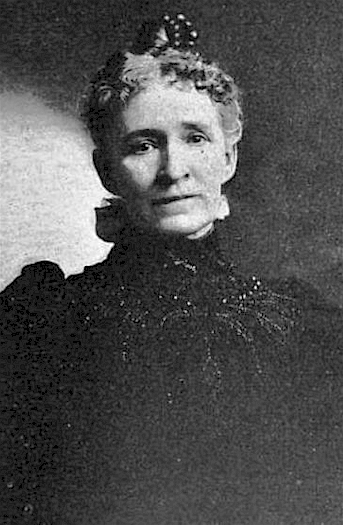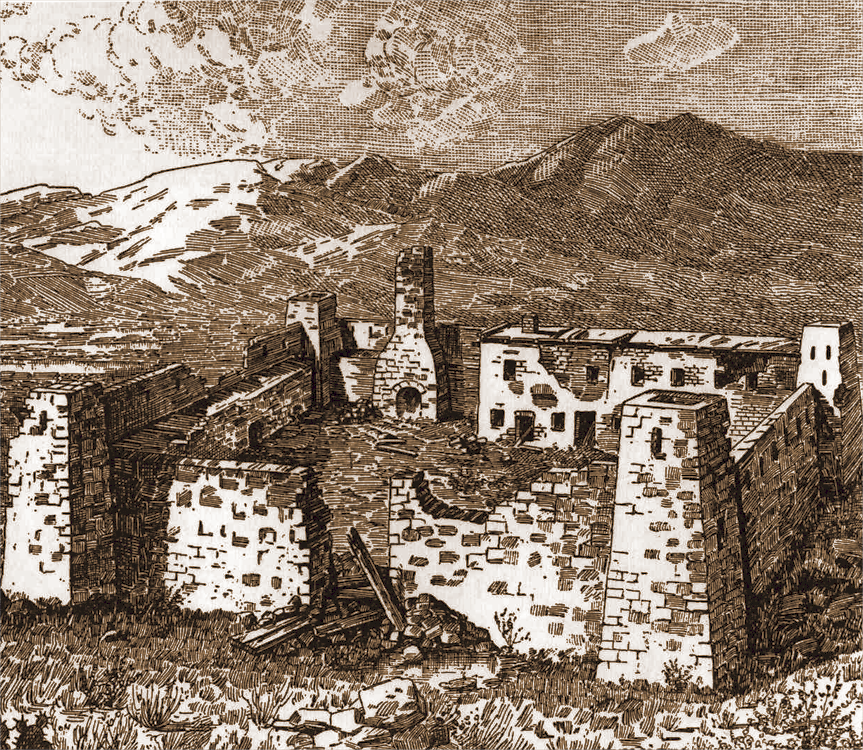A History
of The Old Fort
The Old Las Vegas Mormon Fort State Historic Park plays an important role in the history of the City of Las Vegas, Nevada.
It is the only U.S. State Park located in a city that houses the first building ever erected in that city.
Follow along with the timeline on this page to get a sense of how The Old Fort came to be, how it changed hands on many occasions, and how it contributed to the growth of not only the City of Las Vegas, but of the country itself.
Did you know that The Old Fort played a key role in the construction of the nearby Boulder (now Hoover) Dam? Were you aware that one woman, who initially hated the idea of living here, came to change the face of the entire Las Vegas Valley?
Old Spanish Trail Association
Thursday, August 20, 1931
Daughters of Utah Pioneers
A Video History of The Old Fort
A Timeline Brief
1800's - Paiute Trail
It all starts with a trail. The Old Spanish Trail, as it came to be known, connected the Mexican cities of Santa Fe and Los Angeles. Pieces of this trail were created many years before by the indigenous Paiute peoples. In fact, The Utes, Pueblos, Jicarilla Apaches, Hopis, Navajos, Paiutes, Mojaves, and Chemehuevis had devised trail networks decades before this time. The Southern Paiutes called it the Paiute Trail, and it was only because the Spanish created records that the Spanish names stuck.
1821 - The Meadows
1829 - The Trail Opens
1844 - Frémont Discovery
1848 - End of an Era
1851 - The Mormon Road
1855 - The Old Fort Begins
William A. Bringhurst was named President of the Las Vegas Mission by Brigham Young, and charged with building an encampment with a fort in the area. Mormons believed American Indians, or Lamanites, were descendants of the people of ancient Israel, and it was the responsibility of Mormons to convert Lamanites to their religion, and show them how to farm the land.
The fort walls were site-made adobe brick, 14 feet high, 2 feet thick for the lower 8 feet of the wall, then 1 foot thick for the rest of the height. Walls were 150 feet long on each side, and two bastions rose above at two diagonal corners, protruding from the front of the walls. This arrangement allowed a sentry to have a clear view of the exterior of the two walls of the fort to defend against intruders. Because there were two bastions, all four walls were protected from the outside.
1857 - The Old Fort Ends
1858 - The Final Blow
1861 - Resurrection
1865 - Los Vegas Rancho
1879 - A $5,000 Loan
1881 - Rancho Foreclosed
After O.D. Gass defaulted on the $5,000 loan, Archibald Stewart foreclosed on the property and took the deed in lieu of payment. Some have said that Gass never intended to pay off the loan as he was unable to sell the ranch outright. Gass and his family moved from the ranch in June of 1881 and settled near White Water, California.
On the way there, he sold 1,500 head of cattle that he herded from Los Vegas Rancho to rancher Richard Gird of Rancho Santa Ana del Chino near Pomona, California. Gass died in Bryn Mawr, California on December 10, 1924.
1883 - New Neighbors
After sitting vacant for nearly 2 years, the Archibald Stewart family moved into the fort. Because Helen was not fond of leaving Pioche behind, Archibald promised her that it would only be for a couple of years until he could get things set up and sell the ranch.
Regrettably, he could not keep his promise because on July 13, 1884 he was shot dead at the nearby Kiel Ranch. Some say it was a disputed business deal and others say that he was defending the honor of his wife, Helen Jane Stewart.
In case you’ve seen the Kiel Ranch called Kyle Ranch, you’re not missing anything. The name has been spelled alternately as “Kiel” and “Kyle” because owner Conrad Kiel spelled his name and ranch name both ways.
1884 - Birth of a Magnate
Helen Jane Wiser Stewart faced a key decision. Should she sell the ranch or take over operations? Defying all gender norms of the time, and shortly after the birth of her 5th child, Archibald, Jr., she decided to become a businesswoman and operate the ranch. Even though she had no experience, her intellect and intuition gave her the ability to successfully run the ranch for nearly twenty years.
During that time, she cultivated powerful relationships with the local Southern Paiute indigenous people and acquired more and more property, becoming the largest landowner in Lincoln County. At that time, Lincoln County encompassed what is now Clark County and the total area was 18,546 square miles or 11,869,440 acres.
1890 - Trains A-Comin'
Beloved by the local Paiute, Helen J. Stewart would eventually become a prominent community leader, inclusive of her indigenous friends. And before that happened, she had a premonition about just how big and vibrant this area would become. She reportedly spoke of “seeing the glint of the rails, the smoke of the trains, and homes and church spires in the grain fields on the hill” to her children.
For more detailed information about her, check out the Helen J. Stewart page on the Nevada Women’s History Project website.
1902 - Ranch Sale Paves the Way
1903 - A Name Change
Los Vegas Rancho and the designated name of the city, Los Vegas are both grammatically incorrect in Spanish. This is because the Spanish word for “meadow” is “vega” and it is a feminine noun. Consequently, the correct phrase for “the meadow” is “la vega” and the plural is “las vegas”.
However, in the 1890’s, the U.S. Postmaster General designated the city name as “Los Vegas” to differentiate it from the city of Las Vegas, New Mexico. This was reversed in 1903 when the city was formally re-designated as “Las Vegas” by the postal service.
1905 - End of The Line
The San Pedro, Los Angeles & Salt Lake was completed in Jean, Nevada, twenty miles west of Las Vegas, on January 30, 1905. This end of the line was the beginning of the boom as Clark auctioned off some of the old Stewart property to prospective commercial and residential buyers in an area he called Clark Las Vegas Townsite, now Main Street just North of Fremont. He wanted this area to become a hub for his railroad.
This successful auction of 110 acres to residents and businesses formed the founding of the City of Las Vegas in 1905. It wouldn’t be until 1911 when the City of Las Vegas was officially incorporated.
1911 - Paiute Colony Established
1926 - The First Lady of Las Vegas
Her frail little body housed an indomitable will, a wonderful strength of purpose, and a courageous heart, and she faced death as she had faced the every day problems of life with sublime fortitude.
Some time later, Mrs. Squires gave Helen Jane Wiser Stewart the title of First Lady of Las Vegas, which stands to this day.
1931 - The Boulder Dam
Years in planning, the U.S. Bureau of Reclamation started construction of the Boulder (now Hoover) Dam in March 1931. The largest dam in the world at the time of its completion in 1935, this National Historic Landmark stores enough water in the newly-formed Lake Mead to irrigate 2 million acres.
Safety of the finished dam was assured by workers in a little adobe building restored from the remains of The Old Fort. Here, the Bureau of Reclamation built a laboratory where various concrete mixes were tested for strength. For over 2 years, experts had conducted tests to find the mixture that would produce the 2,500 PSI strength necessary to hold back waters of the Colorado River, forming Lake Mead. For comparison purposes, today you can go to The Home Depot and purchase a bag of concrete for a few dollars rated at 5,000 PSI and up.
On completion, the Hoover Dam used over 45 million pounds of reinforcement steel, 6.6 million tons of concrete (enough to pave a road from San Francisco to New York City), and employed some 21,000 workers. The town of Boulder, Nevada was specifically created to house dam workers and stage equipment.
1939 - Daughters of Utah Pioneers
1955 - The Elks Purchase
Over the years, the Old Fort faced destruction many times. In 1955, the Las Vegas Benevolent and Protective Order of Elks acquired the property with the support of the Daughters of Utah Pioneers. The Elks built a lodge on the site, opening a restaurant and constructing a playground.
Unknowingly, the Elks had inadvertently preserved much of the original foundation by putting 3 to 4 feet of dirt over the area while constructing a playground for members.
1971 - The City of Las Vegas
1972 - National Register of Historic Places
1983 - Friends of The Fort
1991 - The State of Nevada
At the urging of Friends of The Fort and Las Vegas city manager at the time, Ashley Hall, the Old Fort was transferred from the City of Las Vegas to the Nevada Division of State Parks within the Department of Conservation and Natural Resources. Having State ownership coupled with a listing on the National Register of Historic Places all but assured complete protection for the site.
The Old Las Vegas Mormon Fort State Historic Park is the official designation of this park.
